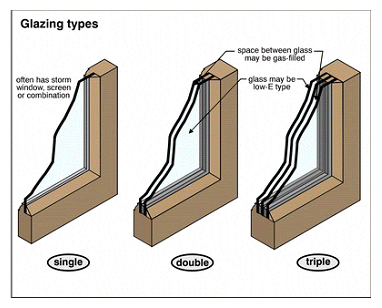The amount of glazed surface follows the passive basic techniques, which means that for the northern fašade two windows have been introduced in the mezzanine for lighting the bedrooms, while the bathroom on the same floor has a mechanical ventilation and artificial lighting. Two small windows are located between the corners west-north and east-north, that bring light in for both the bathroom on the ground floor and part of the living room. The position of these glazings in this location has been thought as an architectural tool for characterising even to the northern fašade otherwise it would result in a 'blind' continued wall. In this way, it is possible to keep the general passive design role to reduce the amount of windows in the north without eliminating them completely. Instead, the southern fašade is almost totally glazed in both case studies, where the only difference is in the type of glazing used for the windows. In fact, according to the Passive Standards for a cold climate, such as the one in UK, it is strongly recommended to introduce a triple-glazing filled with argon or krypton gas between the three layers, with a U-value frame included between 0.85 to 0.70 W/m2K. For the case study in Palermo, due to the different climate conditions and different heating/cooling demand, a triple-glazing would be sufficient for meeting the need to keep the house insulated in both winter and summer. However, because the triple-glazing is still very expensive and because it is not absolutely necessary, a double glazing seems to be the right choice for this case.

| 